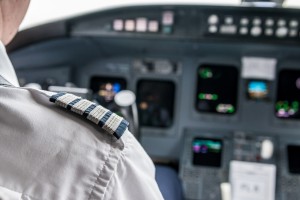Policies & Priorities
Safety
 Aviation safety remains a key priority for AAPA even as past efforts have yielded a steady improvement in safety standards over the last decade for the region. The aviation industry’s excellent safety record reflects the benefits of close collaboration amongst various stakeholders including airlines, aerospace manufacturers, airports, air navigation and other service providers, working closely with national aviation authorities in accordance with established ICAO global standards.
Aviation safety remains a key priority for AAPA even as past efforts have yielded a steady improvement in safety standards over the last decade for the region. The aviation industry’s excellent safety record reflects the benefits of close collaboration amongst various stakeholders including airlines, aerospace manufacturers, airports, air navigation and other service providers, working closely with national aviation authorities in accordance with established ICAO global standards.
With high levels of cooperation and active support from airlines in the region, AAPA provides a forum to facilitate the exchange of information among members to enable lessons learnt, sharing of best practices and design effective analytical tools to develop preventive measures so as to enhance and continuous improvement in safety. Our activities include reporting and analysis of safety data, hazard reporting, safety culture survey, etc.
AAPA is intensifying its efforts to work closely with industry regulators across the region as well as their counterparts elsewhere in the world to reap the benefits of a shared information system. AAPA aims to promote and enhance safety oversight initiatives, and the management of operations in a systematic, organised way in order to minimise risk.
The main areas currently addressed by AAPA include the following:
- Cabin Safety
Cabin safety is a vital part of aviation safety. It ensures the cabin product and service are well designed and delivered to customer safely. Issues addressed include safety risk management, hazard identification, cabin crew training, reporting and investigation, and improved survivability in the event of an emergency situation.
- Wildlife Hazard
Through the Flight Operations and Safety Working Group safety information exchange, AAPA has been active in identifying airports with high rates of bird strike incidents based on the incident reporting of its member airlines. Working through the AAPA Bird Survey Team, AAPA carries out periodical surveys at identified airports and assesses their wildlife hazard management programmes as part of a large programme to promote communication, develop a dialogue and the sharing of best practices with the airport management.
- Unmanned Aircraft Systems (UAS)
With the advancement of technology and increasing popularity of UAS, such as drones used by the industry for aerial work or by the general public, there is a need for better regulation to mitigate the hazards to aircraft, persons or properties. AAPA discusses the safety initiatives taken by the governments in the region as well as initiatives involving other stakeholders.
- Turboprop Safety
AAPA established a turboprop safety forum to discuss the safety challenges faced by turboprop operators and exchange information on flight and ground incidents among airline. The forum provides a communication framework to foster relationships between members and other aviation stakeholders. The group also serves as a forum to communicate and develop plans with regulatory authorities, manufacturers and suppliers on improvements to equipment and in technical and product support.
- Data Management
Apart from addressing current safety issues, AAPA undertakes a data-driven approach in formulating its safety strategy. Member airlines exchange information on a regular basis to monitor trends and identify emerging threats.
For further information, please contact [email protected]
